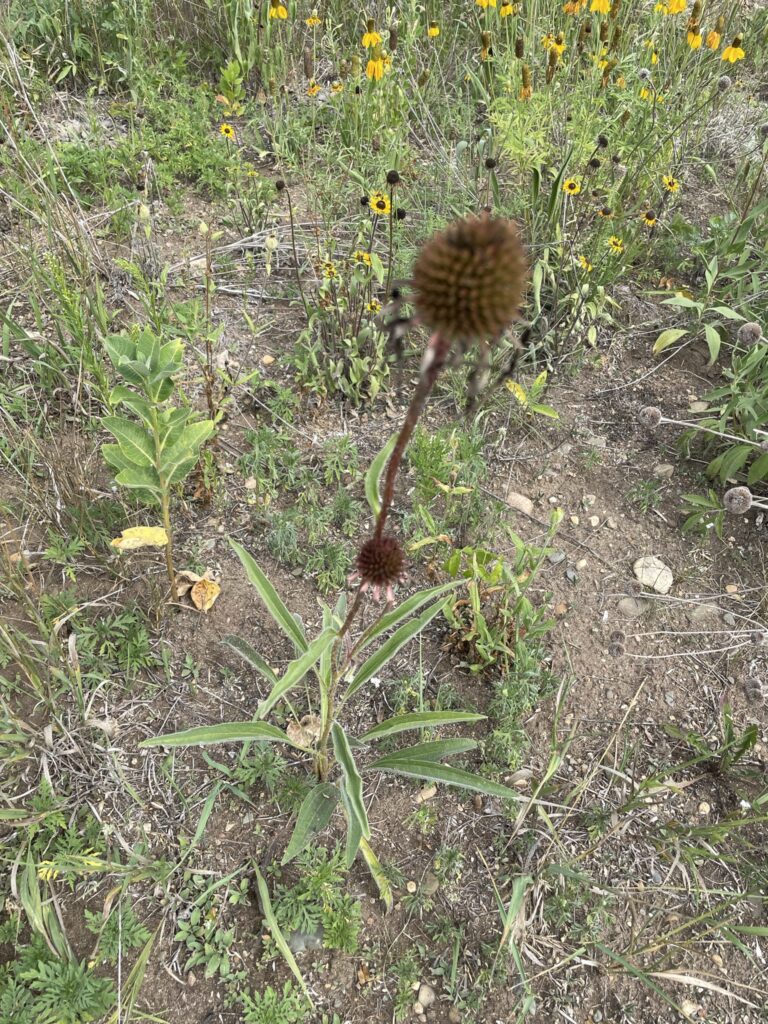

Native To State: YES
Naturally Occurring: NO
Description
Echinacea angustifolia (Narrow-leaved Coneflower) is a perennial herbaceous plant belonging to the Asteraceae family. Here are some key identification characteristics:
Appearance: Narrow-leaved coneflower is a herbaceous plant with a single, erect stem that can reach heights of 1 to 2 feet (30 to 60 centimeters). The stem is typically unbranched and rises from a basal rosette of leaves.
Leaves: The leaves of Echinacea angustifolia are narrow and lance-shaped, giving rise to the plant’s common name. The leaves are arranged alternately along the stem and have toothed margins.
Flowers: The plant produces striking daisy-like flowers with prominent spiky, reddish-brown central disks and ray florets that are pink to purple in color. The ray florets are drooping and have a slightly reflexed appearance.
Inflorescence: The flowers are held on top of the stem in solitary heads, each surrounded by a ring of green bracts.
Blooming Period: Narrow-leaved coneflower blooms from late spring to mid-summer, attracting pollinators like bees and butterflies to its nectar-rich flowers.
Habitat: This species is native to North America and can be found in a variety of habitats, including prairies, meadows, and open woodlands. It prefers well-drained soils.
Distribution: Narrow-leaved coneflower is found in regions ranging from the central United States to the western parts of Canada.
Conservation: While not considered a threatened species, preserving its natural habitats is important for maintaining healthy populations of narrow-leaved coneflower.
Other Species: Echinacea angustifolia is part of the Echinacea genus, which includes other coneflower species with diverse characteristics.
Narrow-leaved coneflower is admired for its showy and distinctive flowers, making it a popular choice for native plant gardens and wildflower meadows. Its ecological importance in supporting pollinators and its ornamental value contribute to its popularity in horticulture and landscape design.
Occurrence
In both the original prairie section and the new seeded plot.

